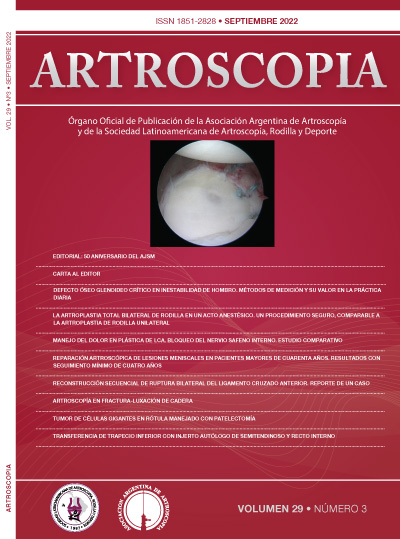Abstract
Introduction: the aim of this study is to compares the clinical results and complications of bilateral total knee arthroplasty (BTKA) with unilateral total knee arthroplasty (UTKA).
Materials and methods: case control study. Fifteen patients (thirty knees) with BTKA and hundred two patients with UTKA were analyzed, operated from March 2016 to August 2018 by the same surgical team, center and prosthetic model. Arthroplasties with constrained components were excluded. Demographic data, length of hospital stay (LOS), hematocrit drop, need for blood transfusion, days with drainage, post-operative complications, mortality, tourniquet time and range of motion (ROM) were analyzed. KOOS Jr. survey was answered, and satisfaction was reported. Statistical analysis was performed with t-Student, Fisher's test and mixed models (p <0.05).
Results: the groups were comparable (age, BMI, smoking, anesthetic risk according to the classification system of the American Society of Anesthesiology (ASA), depression, hematocrit). The BTKA group presented LOS, drainage days, decrease in post operative hematocrit and need for transfusions significantly higher. There were no significant differences in terms of tourniquet time, post-operative complications, mortality and ROM achieved at short term. There is a tendency to achieve the target ROM (0-120 °) earlier on the BTKA group. There were no significant differences in functional results or satisfaction.
Conclusion: In our center and in selected patients, the BTKA is a safe procedure without a higher rate of complications or associated mortality, with clinical results similar to the UTKA.

This work is licensed under a Creative Commons Attribution-NonCommercial-ShareAlike 4.0 International License.


